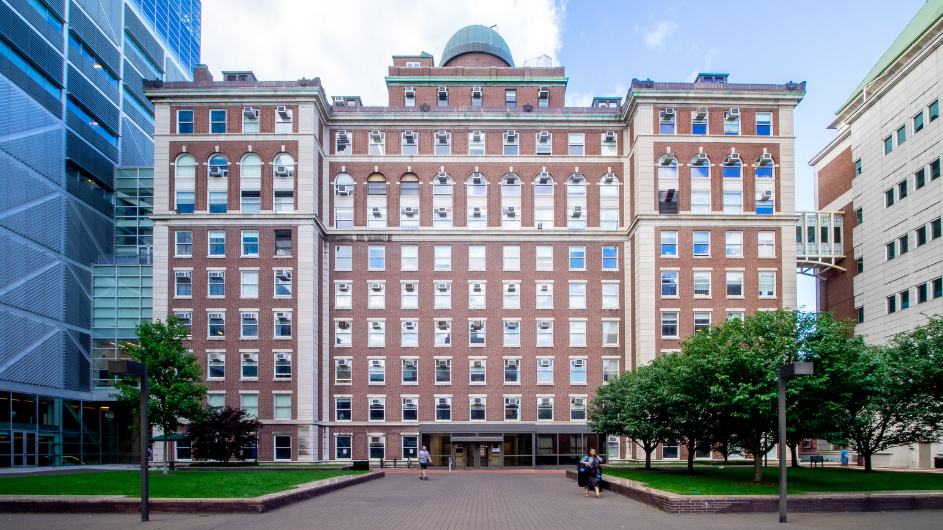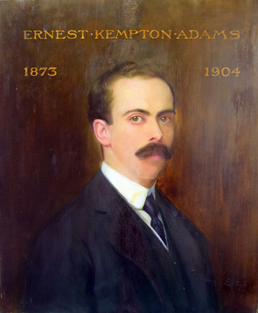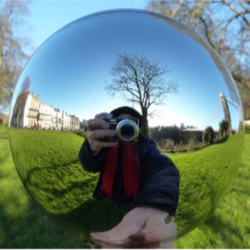EKA Lecture Series Returns, Bringing International Quantum Science to Columbia for More Than a Century
The Ernest Kempton Adams lecture series, which first brought European leaders in physics and mathematics to the university more than 100 years ago, continues Monday, October 17, with a talk on one of the oldest branches of physics from Sir Michael Berry.

The Department of Physics at Columbia University will host a visit and lecture on Monday, October 17, from the University of Bristol’s Professor Sir Michael Berry titled, “Four Geometric Optical Illusions.” Berry’s talk will be the latest installment of the Ernest Kempton Adams (EKA) lecture series and marks a renewed effort from the department to honor the donors of the EKA Fund for Physical Research, established more than a century ago in support of fundamental science.

The fund is named for Ernest Kempton Adams, a graduate of Columbia’s School of Mines, the predecessor to Fu Foundation School of Engineering and Applied Science. Adams earned a degree in electrical engineering in 1897 and a master of arts in 1898 before passing away at the age of 31 in the summer of 1904. That December, Adams’ family donated his collection of scientific equipment along with a $50,000 endowment in his memory.
Thanks to the generosity of the donors and the vision of George Pegram, who graduated with his PhD in physics from Columbia in 1903 (Pegram would be appointed an assistant professor at Columbia in 1909 and go on to serve as the Dean of the Physics Department and, later, of what would become Columbia Engineering), the gift would be repurposed a few years later to support the EKA lecture series.
The series “marked the beginning of America’s engagement with modern physics and of Columbia’s emergence as an internationally engaged research university,” said Columbia Physics Professor Andrew Millis during his remarks at the 2019 EKA lecture and launch of the Max Planck-NYC Center for Nonequilibrium Quantum Phenomena.
Pegram had spent time in Europe following his PhD and was keen to connect faculty and students at Columbia to those advancing the latest scientific thinking abroad. He convinced university President Nicholas Murray Butler to establish a visiting scientist program, which the EKA Fund would support financially. The result was a series of seven lectures held between 1905 and 1913 that brought luminaries such as Max Planck, Hendrik Lorentz, and other leaders in the fields of mathematics and physics to the United States—in some cases, for the first and only time.
“In the early years of the 20th century, few journeys for scientific purposes were made to America,” recalled Lorentz, the Nobel Laureate who traveled to Columbia for his 1906 lecture on “The Theory of the Electron.” (Lorentz also remarked on an enduring feature of the city: its traffic, “a never-ending stream of vehicles that filled the entire street.”) Planck, who seldom left continental Europe, gave eight EKA lectures at Columbia, including an introduction to quantum theory involving what’s thought to be the first public remarks on the quantum concept now known as “Planck’s constant.” The final lectures of the original series were delivered in 1913 by Wilhelm Wien, a founder of the fields of thermodynamics and light-matter interactions, just before the outbreak of World War I.
The Lecture Legacy Resumes
In the ensuing decades, the Physics Department used the EKA Fund to support visitors including Enrico Fermi, whose research at Columbia on the fission of uranium in 1939 acknowledges the EKA fund, as well as the establishment of a teaching laboratory still named for Adams.
In recent years, the department faculty have been keen to re-establish the lecture series. “Even though American science is much more advanced than when the series started, Pegram’s goal of strengthening international connections is still crucial to our progress,” Millis said. “We want to bring the best scientific figures to Columbia to connect with our students and share emerging theories that aren’t well-represented here just yet.”
"Pegram’s goal of strengthening international connections is still crucial to our progress...We want to bring the best scientific figures to Columbia to connect with our students and share emerging theories that aren’t well-represented here just yet."
After lapsing since 1913, the series resumed in 2006 with lectures from Seamus Davis, Dmitri Basov (now Higgins Professor of Physics at Columbia), and Alessandra Lanzara. Following another much shorter lag, Immanuel Bloch, director of the Max Planck Center for Quantum Optics and professor of physics and dean at Ludwig Maximilian University, was invited to restart the EKA lecture series with a talk in 2019 titled, “Quantum Mechanics Under the Microscope.”
The lectures were put on hold throughout the pandemic, but this fall, they will once again be underway. Sir Michael Berry will be on campus for the EKA lecture and to meet with students and faculty members; he will give a second lecture at the Flatiron Institute in lower Manhattan on Tuesday, October 18.
“I was happy to accept the invitation to visit Columbia under the EKA scheme, to share and get responses to my style of physics with distinguished faculty of a great Ivy League University that I am largely unfamiliar with,” said Berry. “And, because I rarely miss a chance to enjoy exploring the endless delights of New York City."

Berry is the Melville Wills Professor of Physics (Emeritus) at the University of Bristol and a recent recipient of the Wolf Prize; his work connects quantum mechanics with topology, a mathematical field that studies how a material’s geometry influences its properties. On Monday, October 17, he will discuss one of the oldest branches of physics: geometrical optics, which describes light as rays.
“Although widely applied—for example, to design lenses—it is no longer routinely taught to physics students, probably because it has been superseded by deeper levels of understanding of light as waves and as electromagnetic or quantum fields,” Berry noted. “But ray physics is still nontrivial and still a live subject. It can provide unexpected insights into phenomena, some previously unexplained for millennia. My choice for the EKA colloquium, of illusions that can be explained in this way, reflects two of my scientific obsessions: finding new things in old things and finding the arcane in the mundane.”
The Physic Department is currently planning the next EKA lecturer’s visit to Columbia.